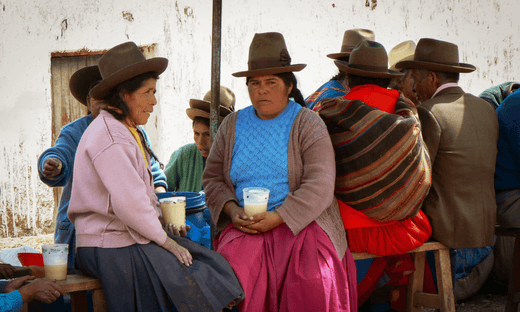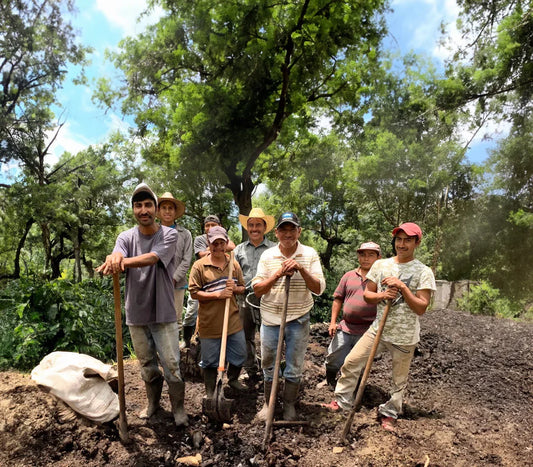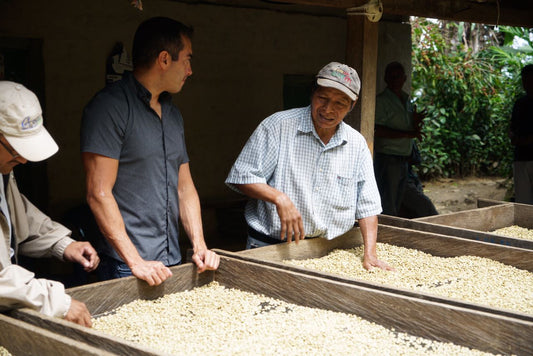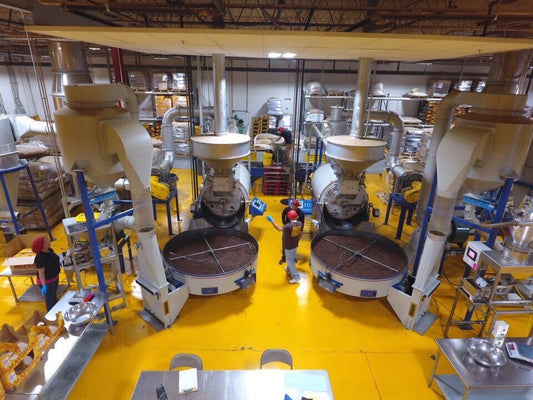
What is Chicha? The Legend and Legacy of a Latin American Beverage
Chicha is a corn-based beverage commonly found in countries throughout Latin America. But did you know that there’s much more to this drink than meets the eye?
Jump to:
Chicha is a corn-based beverage commonly found in countries throughout Central and parts of South America. Though recipes vary greatly, it is primarily made using corn, although variations utilizing fruits like pineapple or manioc roots exist. The fermentation process (catalyzed by natural enzymes) converts the starches into alcohol, resulting in a mildly (or relatively strong, depending on the region) alcoholic beverage.
The Legend of Chicha
In the highlands of Guatemala, there is a small village nestled amidst lush green landscapes. Here, the art of making chicha has been passed down through generations, each brewer adding their unique touch to the beloved beverage. Among them, an elderly woman named doña Rosa is renowned for her exceptional chicha-making skills.
Legend has it that doña Rosa possesses an uncanny ability to infuse her chicha with a touch of magic. Locals even believe that her brew has the power to bring them good luck and prosperity.
As the story goes, during one particularly challenging harvest season, the village was plagued by a drought that threatened their livelihoods. Desperate for a solution, they turned to doña Rosa and her chicha.
With an extra helping of care and devotion, she brewed a batch of chicha, infusing it with the collective hope and prayers of the villagers. Miraculously, soon after consuming the enchanted chicha, rain clouds gathered, and the parched land was quenched by a much-needed downpour. The villagers rejoiced, attributing their bountiful harvest to the power of doña Rosa's chicha.
So the legend of chicha was born.
Chicha: A Recipe Steeped in Local Practices
If you weren’t already aware, Chicha is deeply intertwined with the cultural identities of Latin American communities. Often used for rituals and celebrations, it holds historical significance as a vital part of ancient civilizations such as the Mayans, Inca’s and Aztecs.
Central America's ancient civilizations revered chicha as a sacred elixir, reserving it for ceremonial rituals and celebrations.
As we traverse the Central American landscape, the variations of chicha become evident. In Guatemala, chicha is known as "chicha de jora" and is primarily made from maize. Meanwhile, in Honduras, "chicha de maíz" is flavored with a touch of cinnamon and cloves.
Latin American cultural historian Dr. María Elena García explains how the variations in chicha are down to the diverse agricultural practices and ingredient availability in different regions.. She notes that the ingredients used in chicha recipes are “often influenced by local agricultural produce and cultural preferences,” which results in distinct flavors and brewing techniques.
This distinction is highly notable as we travel further south, to Peru, where chicha is made from purple corn, along with fruit and spices. This variation is vibrant in both color and flavor. Whereas, throughout the Amazon Basin, chicha tends to be made using cassava root in place of corn.

Celebrating Chicha Traditions Across Central America
While the love for chicha is universal across Latin America, chicha traditions vary by country and region - just like its recipes!
Renowned for its rich, creamy texture, chicha in El Salvador boasts a unique chicha recipe made with cocoa, cinnamon, and ground rice. The resulting fusion of flavors is truly addictive.
Nicaragua, on the other hand, takes pride in its own variation of chicha, chicha bruja (literally meaning witch’s brew), given its striking purple hue, achieved by infusing corn with purple maicillo, a local purple corn variety. It is served during traditional ceremonies and gatherings, where its consumption is seen as a way to honor ancestral tradition and strengthen community bonds.
Yet another unique adaptation of chicha is found in Panama, known as "chicha de saril" or "chicha de jamaica." This variation is made from the hibiscus flower, locally known as "saril" or "jamaica." The hibiscus petals are steeped in water, sweetened, and left to ferment, resulting in a vibrant and refreshing chicha with a tangy flavor.

Chicha's Evolution
While chicha’s roots are planted firmly in Central America's past, it has also shown remarkable perseverance in adapting to the present. In recent years, a revival of interest in traditional beverages and a surge in craft brewing has propelled chicha back into the spotlight.
One country that exemplifies this revival is Costa Rica. Known for its lush coffee plantations and rich biodiversity, Costa Rica has become a hub of innovation in the craft beer scene. Inspired by chicha's traditional brewing methods and distinctive flavors, Costa Rican breweries have crafted their own interpretations of this traditional, beloved beverage.
Meanwhile, in Honduras chefs have explored ways to incorporate chicha into modern cuisine, using it as a marinade for meats and poultry, or to infuse sauces and dressings. Integration of chicha into savory dishes often adds depth of flavor (and a touch of cultural heritage) to contemporary culinary creations.
Chicha's journey through Latin America is one of adaptation and reinvention. From its sacred origins to the modern craft beer movement, chicha continues to evolve while preserving its cultural significance. As Latinos celebrate our diverse identities and cherish our ancestral traditions, chicha stands as a testament to everything we stand for. ¡Salud!


